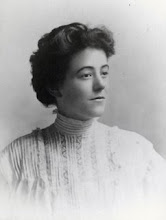
An article from the Chicago Daily Tribune
August 11, 1954
~continued from last week~
Offer New Adventures
Gulls have learned to break open clams by dropping them on the boardwalks of seaside resorts and other man-made structures. This year, a family in Island Park, N.Y., was annoyed during daylight hours by a constant bombardment of clams on the flat white roof of their home. Finally, the family had a seascape painted on the roof in the hope of deceiving the birds.
Cities provide birds with new adventures in housing. When the American west was settled, house finches moved from canyons and deserts to towns. [NOTE: House finches were exotics like parrots or parakeets, which escaped into the environment. Today, all house finches are descended from those few birds.] Finches and sparrows feel so at ease in metropolitan habitats that they sometimes build their nests in traffic signals. Starlings, unfortunately, find no home more appealing than the protected ledges and ornamented cornices of public buildings.
By and large, birds find people tolerant of their eccentric nesting. When a sparrow built a home in the boom of a mobile crane in Trenton, Ont., the operator taped the nest securely and went right on with his job of moving heavy equipment.
to be continued …
Note: The House Sparrow isn’t a member of the sparrow family at all, but is a finch, the Weaver Finch to be precise. It, too, was an import, like purple loosestrife or the zebra mussel. Check out the beak. (We could get into a discussion of evolution here, but I’ll save that for another day when my energy cells are fully recharged.) Sparrows’ beaks are much smaller. On top of its omnipresence, the House Sparrow makes a very neat, secure, cozy nest, so its offspring have a good start in life.
Are not five sparrows
bought for two farthings?
And yet not one of them
is forgotten of God.
William Tyndale translation
of Luke 12:6

1 comment:
I love the hawk story in NYC - Paula Zahn and her husband, etc. I'm on the hawk's side, of course.
Post a Comment